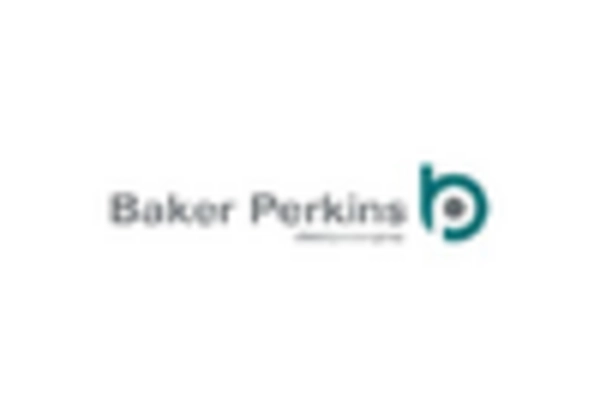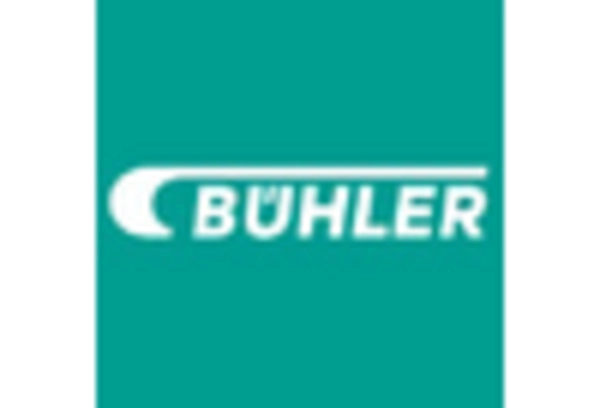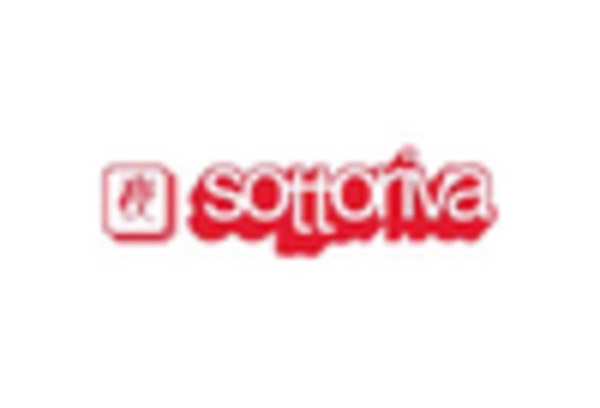Rising Demand for Artisan Bread
The Bread Processing Equipment Market is experiencing a notable increase in demand for artisan bread, driven by consumer preferences for high-quality, handcrafted products. This trend is reflected in the growing number of bakeries and small-scale producers who require specialized equipment to meet the expectations of discerning customers. According to industry reports, the artisan bread segment is projected to grow at a compound annual growth rate of approximately 7% over the next five years. As consumers become more health-conscious and seek unique flavors, the Bread Processing Equipment Market must adapt to provide the necessary tools for these artisanal processes, including mixers, ovens, and proofers that enhance the quality and authenticity of the final product.
Growth of E-commerce in Food Sector
The Bread Processing Equipment Market is witnessing a transformation due to the growth of e-commerce in the food sector. As more consumers turn to online shopping for their grocery needs, bakeries are adapting their business models to include online sales. This shift necessitates the use of specialized equipment that can support the production of goods intended for direct-to-consumer sales. The rise of e-commerce is expected to drive demand for packaging and processing equipment that ensures product freshness and quality during transit. Market forecasts suggest that this trend could lead to a 4% increase in the demand for bread processing equipment over the next few years, highlighting the need for the industry to innovate in response to changing consumer behaviors.
Expansion of Commercial Baking Sector
The Bread Processing Equipment Market is benefiting from the expansion of the commercial baking sector, which includes large-scale bakeries and food service operations. This growth is driven by an increase in consumer demand for convenience foods, such as pre-packaged bread and baked goods. As a result, commercial bakeries are investing in high-capacity equipment to meet the rising production needs. Market analysis indicates that the commercial segment is expected to account for a significant share of the overall market, with projections estimating a growth rate of approximately 6% over the next few years. This trend underscores the necessity for the Bread Processing Equipment Market to provide robust and efficient solutions tailored to the demands of large-scale operations.
Technological Advancements in Equipment
Technological innovations are significantly influencing the Bread Processing Equipment Market, as manufacturers increasingly integrate advanced features into their machinery. Automation, precision, and efficiency are becoming paramount, with equipment now capable of producing consistent results while minimizing labor costs. For instance, the introduction of smart ovens and automated mixing systems allows bakeries to optimize their production processes. The market for such advanced equipment is expected to expand, with estimates suggesting a growth rate of around 5% annually. As bakeries strive to enhance productivity and reduce waste, the Bread Processing Equipment Market is likely to see a surge in demand for these cutting-edge technologies.
Focus on Food Safety and Quality Standards
The Bread Processing Equipment Market is increasingly influenced by stringent food safety and quality standards imposed by regulatory bodies. As consumers become more aware of food safety issues, bakeries are compelled to adopt equipment that ensures compliance with these regulations. This includes machinery that facilitates traceability, hygiene, and quality control throughout the production process. The market is likely to see a rise in demand for equipment that meets these standards, as non-compliance can lead to significant financial repercussions. Consequently, the Bread Processing Equipment Market must prioritize the development of solutions that not only enhance product quality but also adhere to the evolving regulatory landscape.


















Leave a Comment